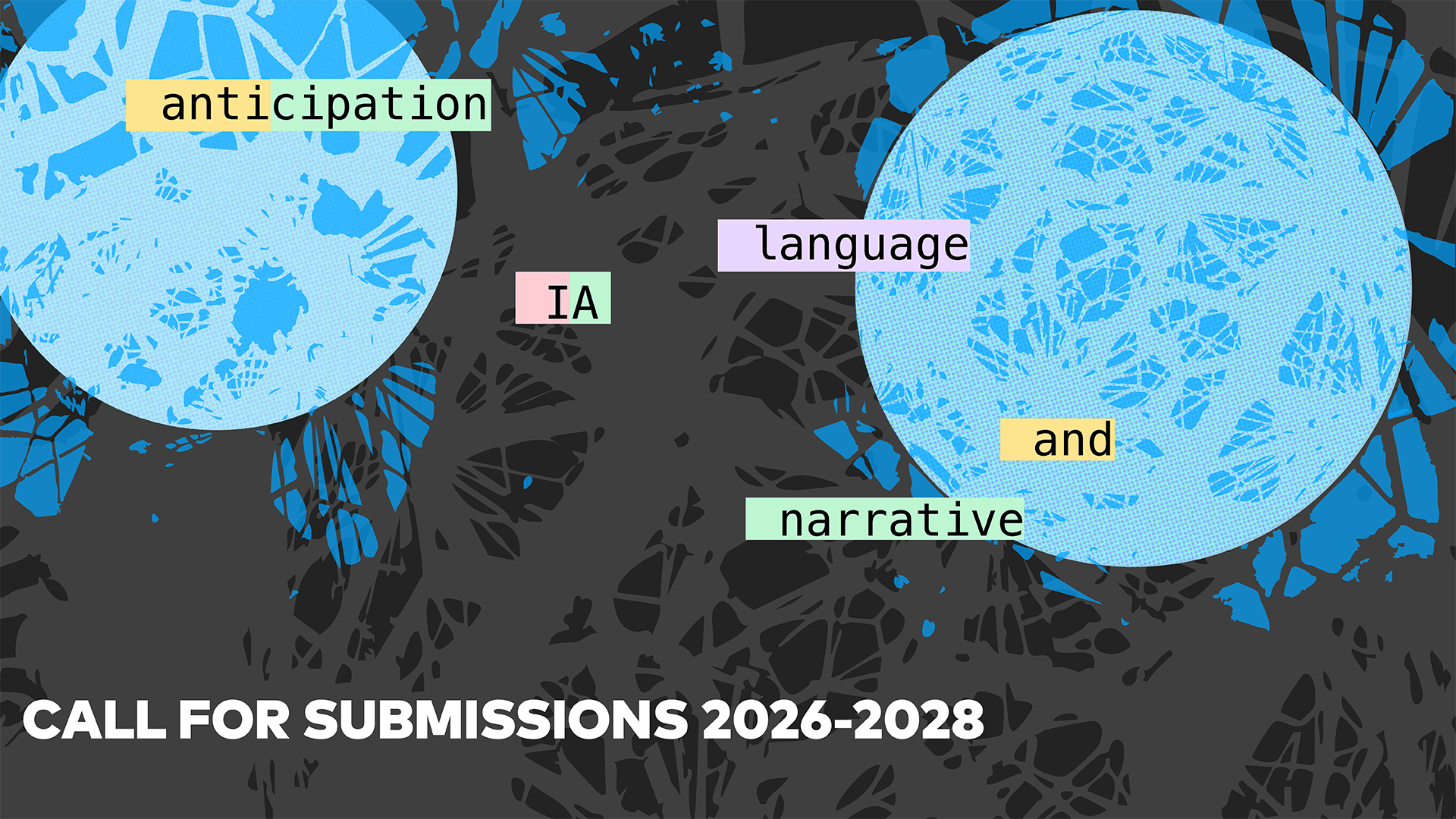TOPO, a Montreal based artists run centre in digital arts, is issuing a call for submissions for its 2026-28 artistic programming. Anticipation – AI, Language and Narrative is the theme under which TOPO envisages the series of exhibitions, interventions and collaborations which will animate its next season of activities, beginning in the fall of 2026.
With advances in artificial intelligence (AI) which are pushing the boundaries in every field, including that of linguistic expression and the construction of narratives, the world is in ferment.
For this new programming we are looking for proposals which consider issues around AI, language and narrative without the artworks themselves necessarily being generated entirely by AI.
Proposals will take the form of installations in our display window, and can also include web development, workshops, talks, residencies, outreach/co-creation initiatives or other kinds of interventions.
AI, Language and Narrative: Themes and Perspectives
AI and the Challenge of Language
On the level of human language, AI generates Large Language Models (LLM) which reproduce its nuances and complexities. In particular, AI language applications process natural languages, generate content and translate texts into different languages. Swept along by large quantities of data, LLM are designed to understand and generate language like a human being by learning the context in which it is found. These artificial intelligence tools offer opportunities for the some 7,000 languages spoken in the world, many of which are considered to be endangered. Nevertheless, the quantity and quality of the linguistic data available are still major obstacles. It is crucial, for the success of these initiatives, that ethical questions and the need for the active participation of language communities be taken into consideration. Can ancestral cosmologies contribute to reinventing our futures?
AI as a Producer of Narratives
The rise of generative AI poses profound questions around concepts of language, narrative and, more broadly, of writing and literature. The new writing machines make it possible to invent new languages, in the manner of Oceania’s Newspeak (Orwell, 1984) or Interlingua, Esperanto’s little cousin. Growing numbers of fictional narratives are blurring the boundaries between the authentic and the simulated, giving rise to numerous questions around ideas about invention, creation and co-creation. The biological concept sympoiesis (Haraway, 2016), tied to the interconnectivity of systems, could be updated here to describe this human-machine relation and to go beyond an anthropocentric view of creation and auctoriality. Does AI generate narratives we could not have thought of? What new narrative forms are arising out of these collaborations? What new fictional imaginaries?
IImaginaries and Futuristic Fiction
Cybernetics and science fiction are classical references in the narrative forms generated by AI. They produced the first depictions of androids and robots in relation to humankind, in an apocalyptic or empathetic vision of the machine. Today AI’s fictional depictions are developing according to technological progress. Both its omnipresence and its immateriality give rise to new futuristic and mythical narratives on the future of humanity. “In a world in which society has become artificial, could artificial intelligences make society?” (Olivier Paquet, Les machines-fantômes, 2019). How do the concepts utopia, dystopia and uchronia continue to shape AI’s imaginary?
Criteria and Stipulations
For the display window, finalised projects or those in the process of creation and showing solid commitment on the part of the artist will be favoured. The selection criteria take into account the relevance and the feasibility of the project in the proposed context. The artist must be able to carry out the production of his or her work and, with the support of our team, to maintain it throughout the duration of the exhibition.
In evaluating proposals, TOPO is attentive to the diverse forms of presenting and formulating practices which arise out of artistic and cultural diversity.
Artists whose proposal is selected will benefit from the following:
- a dissemination fee;
- access to the centre’s computer and audiovisual equipment (see online);
- three days of technical support mounting the artwork;
- the organisation of a dissemination event supported by a promotional campaign.
In the case of artists who reside outside Montreal, transportation and lodging costs must be stipulated in a specific agreement.
Documents requested :
1. Project Statements
- Description of the installation project or another proposal (max. 1 page)
- Description of the technical requirements — installation (max. 1 page)
- Artist’s statement (max. 1 page)
- Curriculum vitae (max. 3 pages)
All text documents must be joined in a single PDF file.
2. Audiovisual Documentation
- 10 JPG images max, short videos
- Links to web documentation
These documents must be joined in a single Zip file in order to facilitate handling them.
Submit your proposal between now and September 22, 2025
Informations
TOPO – Digital Creation Centre
608-5445, avenue de Gaspé,
Montréal (Québec) Canada H2T 3B2
T +1 — 514 279-8676
diffusion@topo.art • www.TOPO.art
Display window plan





